The largest Korean population outside of Korea can be found here in my hometown: Los Angeles. Our K-town is thriving — endless nori-bangs (private karaoke rooms), neon-lit buildings, and hundreds of Korean restaurants to choose from. But even with the conditions ripe for exploring this exquisite gastronomy, I still found my Korean food choices limited to those most popular in the United States: bulgogi at BBQ houses, and japchae elsewhere. My choices were not limited on the menu; I chose these same plates because I lacked Korean culinary knowledge and hesitated to taste outside the familiar. My recent trip to Seoul tossed that caution out into the snow, and I was ready to explore Korean cuisine with no reservations (rimshot). My goal: to taste everything and anything, and report my recommendations to the Korean food amateur.
Be inspired to adventure in Korean gastronomy after the Jump…
Kimchi – With roots traceable some 3,000 years, kimchi has certainly become the most ubiquitous Korean dish. Cabbage, scallions, brine, garlic, red chilis, and spices are dressed together and then stored (generally outdoors or underground) in large ceramic jars to ferment to the liking of its creator. This dish is then served cold as a side to any and every Korean dish. And do take the opportunity to load up- medics agree that it’s rich in vitamins and fiber, boosts metabolism, and aids digestion. There are as many different varieties of kimchi as there are whiskey bars in Seoul (translation – A LOT), but the kimchi shown in this images was the best I’ve tasted. Courtesy of Samwon Garden, a fine barbeque restaurant that has become an institution in Seoul, this kimchi was served laced with pine nuts, sliced garlic cloves, greens, and carrots. The heat was milder than most kimchi, but it still burst with the flavor of a dozen spices.
Kimbap – This is not a wannabe-california-roll, as I so ridiculously assumed whenever I’d see these rolls being prepared at the café on the first floor of former office in Koreatown. Kimbap holds its own. Tuna, ham, carrot, raddish, and egg are just some of the ingredients rolled up in rice and seaweed, cut into bite size pieces, and served without dressing or garnish. This is a flavorful, inexpensive, well-balanced snack or light meal anywhere in Korea, and anywhere you might be lucky enough to find it here.
Sutbul – Korean BBQ is fresh, grilled meats over open charcoal flame. Galbi (beef or pork shortribs) or bulgogi (thinly sliced sirloin marinated in a sweet soy sauce) are amongst the more popular cuts, while grilled chicken, fish, and vegetables remain options. These raw meats and vegetables are then cooked and your table and served with a variety of tasty side dishes. Lettuce or sesame leaves also compliment the meat, as its meant to be wrapped in these leaved with garnishes like sweet soy sauce, sliced garlic, and chili paste. It’s a feast at its finest and best enjoyed with soju (a clear rice-based liquor with a clean finish served in a shot glass) or makgeolli (a thick, milky rice based wine with a slightly sweet flavor served in a bowl).
Sundubu Jjigae – This spicy soup of uncurdled tofu served with rice is one of the most common dishes in Korean cuisine, but delicious nonetheless. It’s readily available after a long night out in Seoul, and will bring you back to life if you’re so lucky to find it on your walk or cab ride home here.
Samgyetang – This traditional Korean soup is comprised of a whole young chicken stuffed with roasted ginseng, jujube fruits, garlic and rice served in a savory onion broth. It is traditionally served in the summer for its medical properties and nutrients, which replaces those lost through excessive physical exertion during the hot summers in Korea. But this will breathe life into you during the winter, which is when I enjoyed it first as my New Year’s Day breakfast. This dish is best served with insimul, a ginseng flavored whiskey that packs a punch.
Nakji Bokkeum – Bokkeum refers to cooking raw ingredients over a flame, or basically stir-fry. This dish consisted of octopus and vegetables stir fried in spicy red pepper sauce. The flavors in this dish are rich and almost nutty – very different from any other stir fried sauce that I’ve tried…and very tasty.
Bimbibap – Julienned cucumber, mushrooms, daikon radish, seaweed, spinach, bean sprouts, fried egg , and thinly sliced marinated meats are served colorfully over rice and a huge dollop of red paper paste. The dish is then meant to be mixed together to create the most satisfying, most flavorful, and still most common of Korean dishes. Bap means rice so go ahead and order that bokkeumbap (fried rice) with confidence.
Japchae – Cellophane noodles made from sweet potato starch sautéed with thinly sliced carrots, green onion, spinach, and wood ear mushrooms in sesame oil and soy sauce sounds as delicious as it tastes. The noodles are served either hot or cold, and traditionally as a side dish in Korea (though I have always seen it served as a main course in the US). This dish was served in the Korean royal court for centuries before becoming widely served at all Korean special occasions.
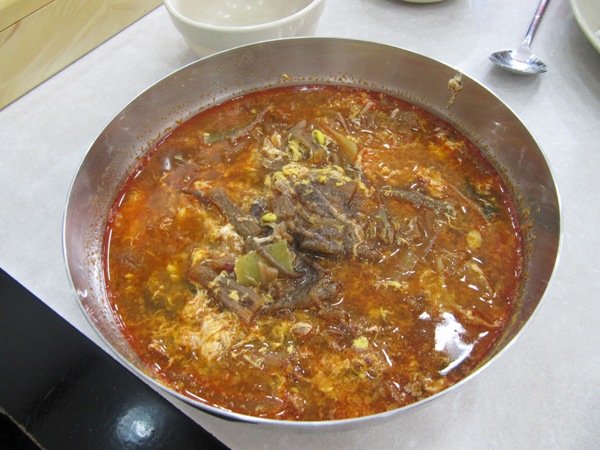
Yookgaejang – This spicy and hearty soup consists of shredded beef brisket, green onions, garlic, bean sprouts, vegetables and pepper. Key word here – SPICY. I can take the heat but the Korean chili powder (kockukaru) can be intense, especially in this soup.
Mandu – Almost every country has some version of the dumpling and Korea does it very well. These dumplings are filled with meat, seafood, or (in this image) kimchi and then served with a soy-vinegar dipping sauce. They were introduced to Korea by the Mongols centuries ago, but are more similar in style to their Turkish equivalent called manti.
Sujebi – Shellfish dominates the flavors in this soup of hand-torn wheat dough flakes served in an anchovy, shellfish, and kelp broth. My sujebi had dozens of shrimps of many different sizes that were meant to be eaten whole – shell, eyes, antennae, all of it. This intensified the heavy taste and pungent smell of shellfish so much that I almost had to stop eating it after only 3, albeit delicious, bites…almost.
Hangjeongsik – This multi-course banquet consists of several soups, noodle and stir fry dishes and even more side plates. Alongside many of the dishes described above, I was served anchovies with shishito peppers, egg fried oysters, sashimi, pajeon (green onion pancake), baked tofu, roast sweet potato, raw chili marinated oysters, kimchi, baked fish, and seaweed salad as just part of our 22 plate feast. If you have the opportunity to experience hangjeongsik, GO and go hungry. And wear nice socks – most hangjeongsik is served in a private room where guests sit at the table on the heated floor without shoes or coats.

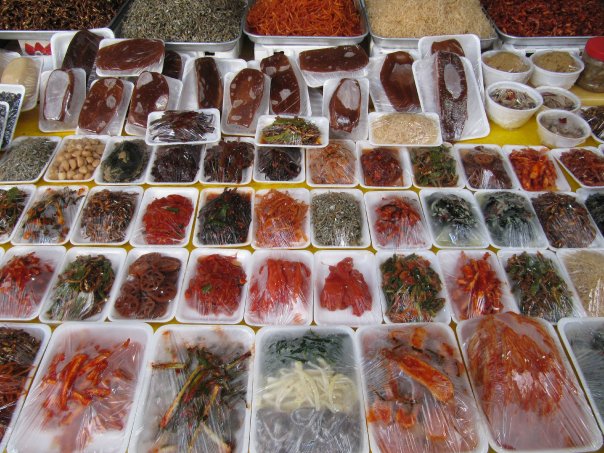

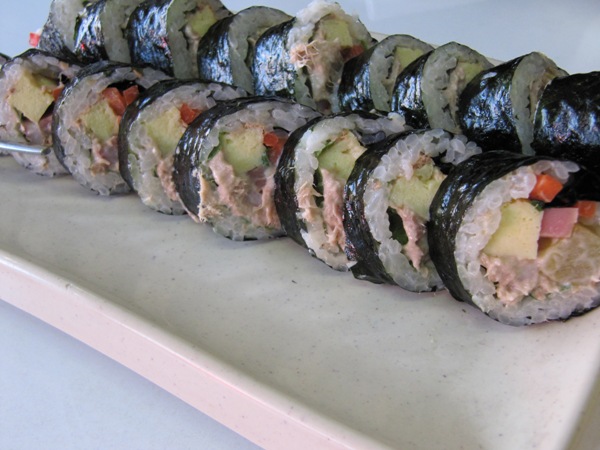
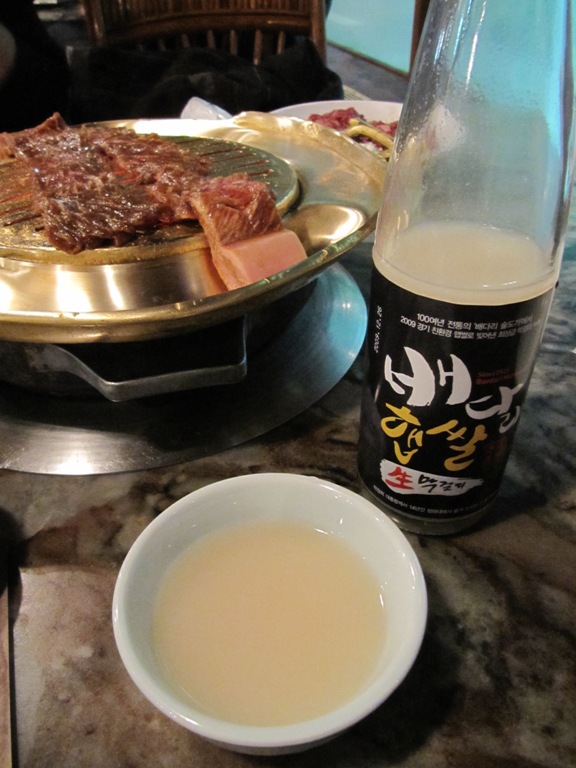
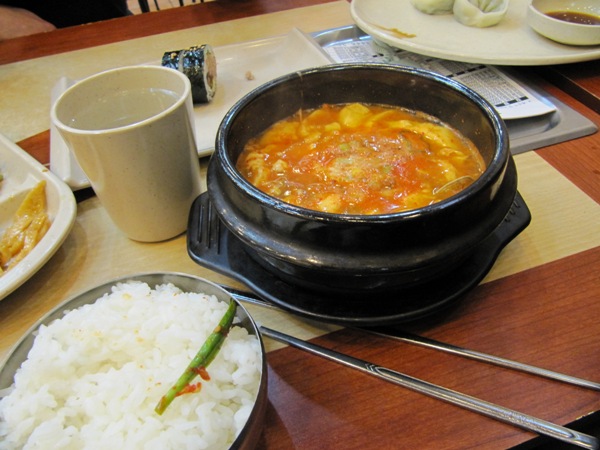
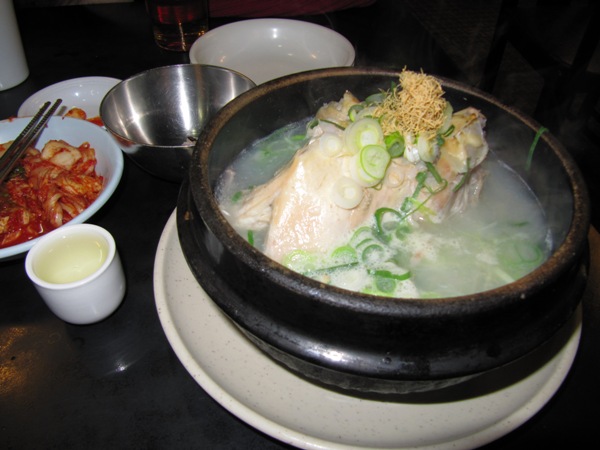

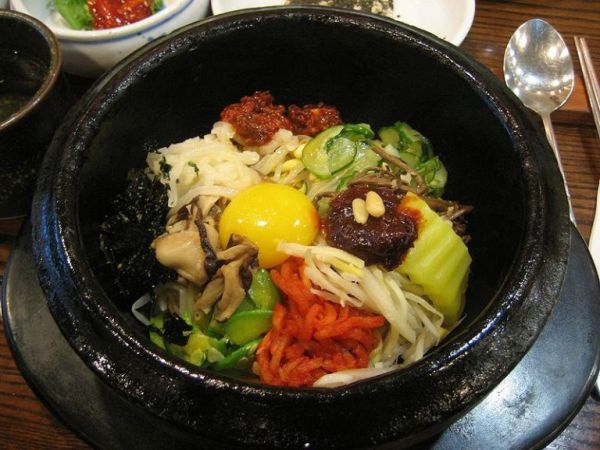
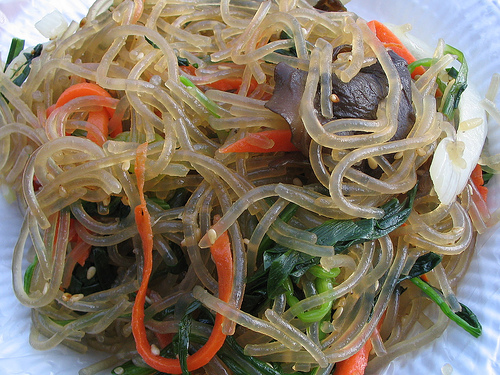


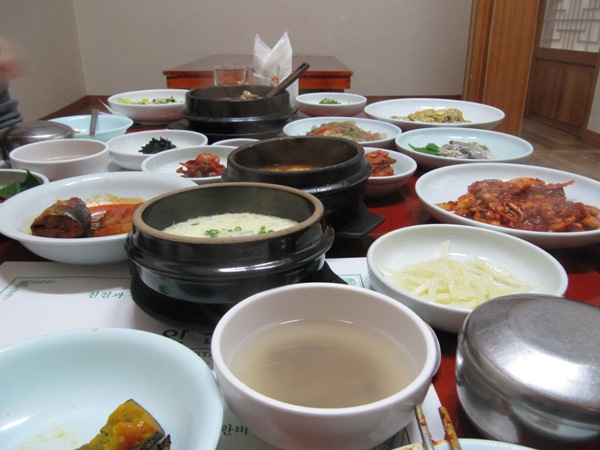
im hungry
totally inspired to check out these dishes! korean food may actually make it in my weekly rotation thanks to you!
Howdy I am so delighted I found your site, I really found you bby mistake, while I was looking on Bing for something else,
Nonetheless I am here now and would just like
to say thank you for a tremendous post and a all round interesting blog (I also love
the theme/design), I don’t have time to browse it all at the minute but I
have bookmarked it and also added in your RSS feeds, so hen Ihave
time I will be back to read a lot more, Please do keep up
the excellent work.
Please let me know if you’re looking for a
author for your weblog. You have some really good posts and I feel I would be a good asset.
If you ever want to take some of the load off, I’d love to write some articles for your blog in exchange for a link back to mine.
Please send me an email if interested. Regards!